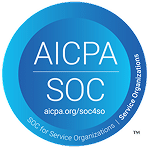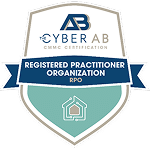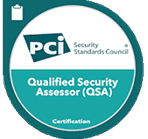Understanding the benefits of achieving FedRAMP compliance is crucial for cloud service providers aiming to work with U.S. federal agencies. It offers market access to government contracts, enhances client trust, and demonstrates strong security and risk management.
As the private sector increasingly relies on cloud computing to improve efficiency, scalability, and security, so does the U.S. government. This reliance requires safeguarding sensitive government data, and the Federal Risk and Authorization Management Program (FedRAMP) addresses this need.
FedRAMP standardizes the security assessment, authorization, and continuous monitoring of cloud services used by federal agencies. For cloud service providers (CSPs), achieving FedRAMP compliance is essential for gaining opportunities in the federal sector and demonstrating security excellence. By streamlining cloud security across government agencies, FedRAMP ensures that CSPs uphold the highest cybersecurity standards and become a trusted resource for government contracts.
This guide will provide a thorough understanding of achieving FedRAMP compliance, including its designations and the detailed steps of the authorization process. It aims to simplify the FedRAMP compliance journey.
The Importance of FedRAMP Compliance
Access to Federal Business Opportunities
Achieving FedRAMP compliance is not just a legal requirement, it’s a strategic move that can significantly enhance your business. By becoming FedRAMP compliant, you gain access to the expansive market of government contracts, opening doors to a wide range of federal business opportunities. The U.S. government is one of the largest purchasers of cloud services, so FedRAMP-authorized providers are well-positioned to tap into a steady and lucrative stream of potential clients. This strategic advantage empowers you to expand your market reach and grow your business.
Enhanced Trust and Security Assurance
FedRAMP compliance instills greater confidence in your organization from government agencies and private-sector customers. The rigorous security standards required by FedRAMP demonstrate that your cloud services have undergone thorough assessments, ensuring they meet the highest levels of cybersecurity. This is especially critical when handling sensitive government data, as agencies must trust that CSPs can safeguard against breaches, data leaks, and other cyber threats. This security reassurance instills a deep confidence in your organization’s ability to meet and exceed stringent security expectations, making you a trusted resource in the industry.
Robust Risk Management
FedRAMP compliance highlights your organization’s long-term commitment to risk management and security practices. The FedRAMP framework demands robust security controls and continuous monitoring, ensuring providers proactively identify and mitigate risks. This commitment sets FedRAMP-compliant providers apart from competitors, demonstrating a dedication to protecting data and infrastructure. It also shows your reliability as a service provider, giving your clients peace of mind about the security of their data.
Improved Security Posture
Moreover, FedRAMP compliance has a compounding effect on your organization’s overall security posture. The standardized controls and continuous monitoring processes required by FedRAMP can help improve security practices across all sectors, not just federal engagements. By adopting FedRAMP’s stringent security requirements, CSPs can enhance their cybersecurity capabilities across the board, making their services more attractive to private clients. This proactive approach to security enhancement prepares your organization to meet the evolving cybersecurity challenges.
Legal Alignment and Risk Mitigation
Lastly, achieving FedRAMP compliance ensures that your cloud solutions remain legally aligned with the federal government’s cybersecurity mandates. Non-compliance can lead to severe consequences, including legal penalties, contract cancellations, or exclusion from future government opportunities. Therefore, becoming FedRAMP-compliant safeguards your organization from such risks while allowing you to meet the government’s stringent security expectations.
Understanding FedRAMP Designations
1. FedRAMP Ready
The journey to FedRAMP compliance begins with the FedRAMP Ready designation, which signifies that a cloud service provider has implemented the basic security requirements. Achieving the FedRAMP Ready status demonstrates readiness for a more thorough assessment and serves as a stepping stone toward full authorization. This pre-assessment phase helps CSPs identify areas for improvement before committing to the complete assessment journey.
2. FedRAMP In Process
The FedRAMP In Process designation is a significant milestone for CSPs on their way to full authorization. At this stage, the provider works closely with a sponsoring federal agency and a Third-Party Assessment Organization to undergo an in-depth security assessment, showing active engagement and commitment to achieving compliance standards.
3. FedRAMP Authorized
The FedRAMP Authorized status is the final and most coveted designation for CSPs. To achieve it, CSPs must pass a rigorous security assessment and receive authorization from the Joint Authorization Board (JAB) or individual federal agencies. Under FedRAMP, two authorizations exist: Provisional Authorization to Operate (P-ATO) and Agency Authorization to Operate (ATO). Once a CSP attains FedRAMP Authorized status, it can offer its services to multiple federal agencies, significantly expanding its market potential.
Download Our FedRAMP Whitepaper
Steps to Achieve FedRAMP Compliance
Step 1: Determining Impact Level
To achieve FedRAMP compliance, you need to determine the impact level of the data your cloud service will handle. FedRAMP categorizes cloud systems as low, moderate, or high impact based on data sensitivity. This affects the security controls and assessment process. Most federal agencies require at least a moderate level of security for cloud services.
Step 2: Selecting a Sponsoring Agency
To proceed in the FedRAMP process, CSPs must select a sponsoring agency willing to support their application. This federal agency will guide the CSP through the compliance process, provide insight into the unique security needs of government data, and ultimately issue the ATO. A committed sponsoring agency increases the likelihood of success by ensuring direct communication with those who understand the requirements and risks associated with government cloud adoption. When choosing a sponsoring agency, consider their experience with cloud services and willingness to support your application.
Step 3: Engaging with a Third-Party Assessment Organization (3PAO)
Once a sponsoring agency is on board, CSPs must engage with a Third-Party Assessment Organization (3PAO). A 3PAO is responsible for performing an independent audit of the CSP’s security practices, ensuring compliance with the standards required by FedRAMP. With recent advancements, like 360 Advanced earning its 3PAO designation, it’s easier than ever to work with our experts to perform independent assessments of CSPs seeking to meet the rigorous standards of FedRAMP).
Step 4: Preparing the System Security Plan (SSP)
Next, the CSP must develop a comprehensive System Security Plan (SSP) outlining security controls and procedures to protect federal data. This document is crucial for the FedRAMP assessment, detailing how the CSP intends to meet the program’s security requirements. Working with FedRAMP experts can streamline the SSP development process and ensure all necessary details are covered.
Step 5: Undergoing the FedRAMP Security Assessment
After preparing the SSP, the CSP will undergo the FedRAMP Security Assessment with their 3PAO. This assessment thoroughly examines the system’s security controls, including vulnerability scans, penetration testing, and reviewing policies and procedures. The goal is to ensure the cloud system can withstand potential cyber threats while adhering to government security standards. Successful completion of this assessment is a crucial milestone toward obtaining FedRAMP authorization.
Step 6: Achieving Authorization
Finally, once the assessment is complete, the CSP submits the findings and their SSP to either the JAB or their sponsoring agency for evaluation. If all requirements are met, the CSP receives Authorization to Operate (ATO) or Provisional Authorization to Operate (P-ATO), allowing them to offer their services to federal agencies. Achieving this status signifies compliance and positions the CSP as a trusted provider in the federal marketplace.








